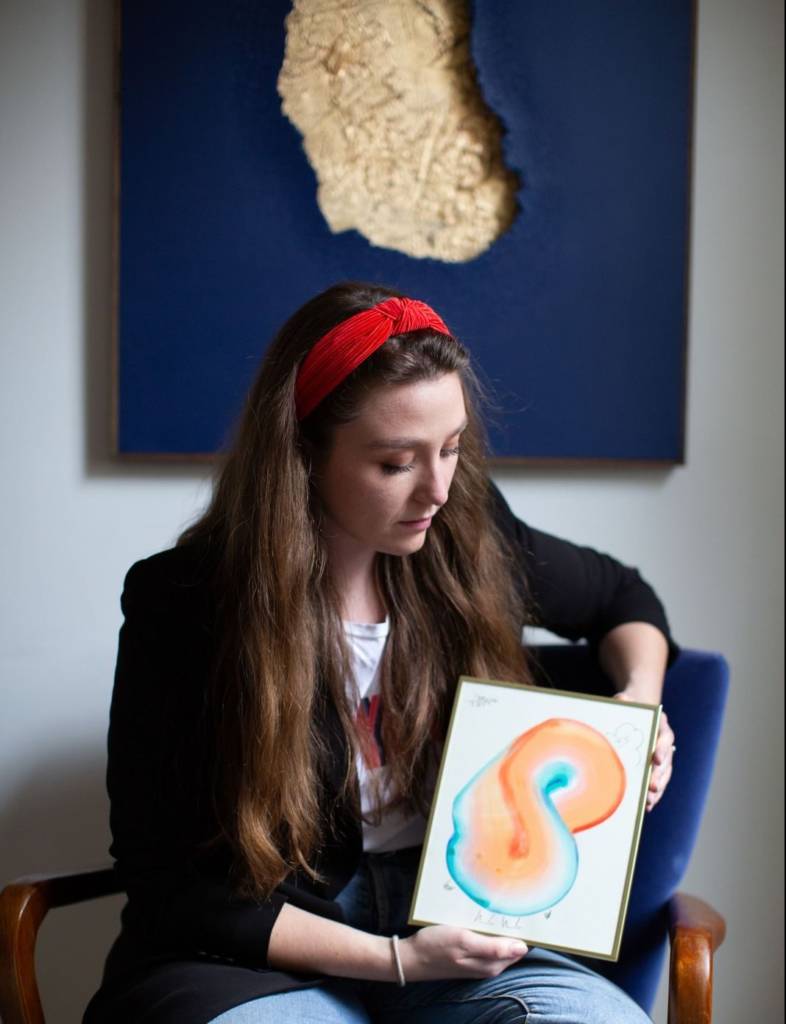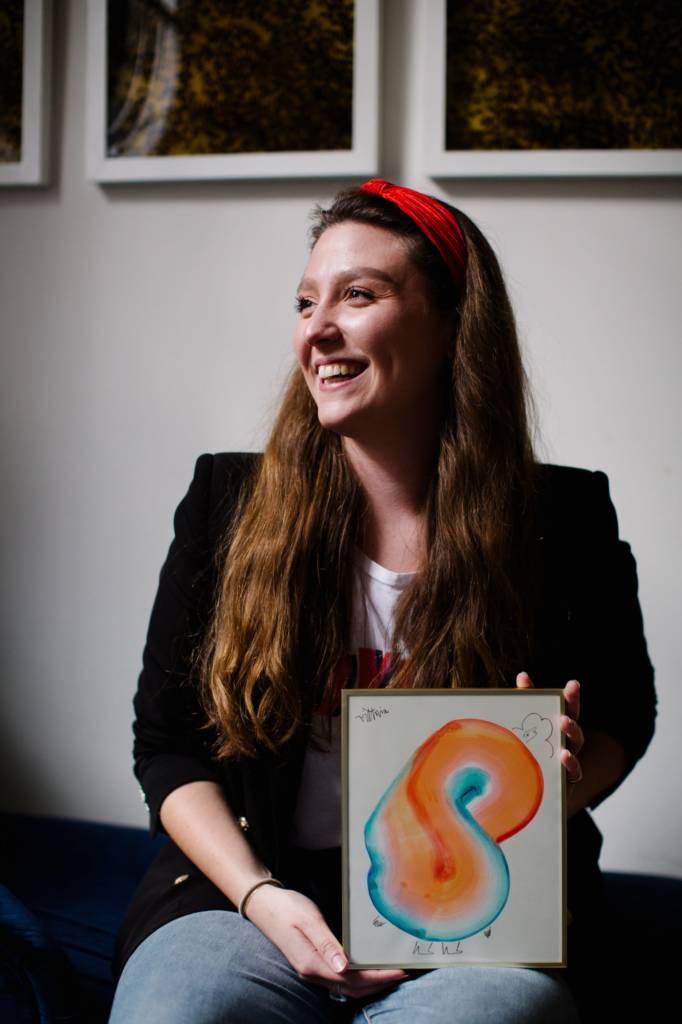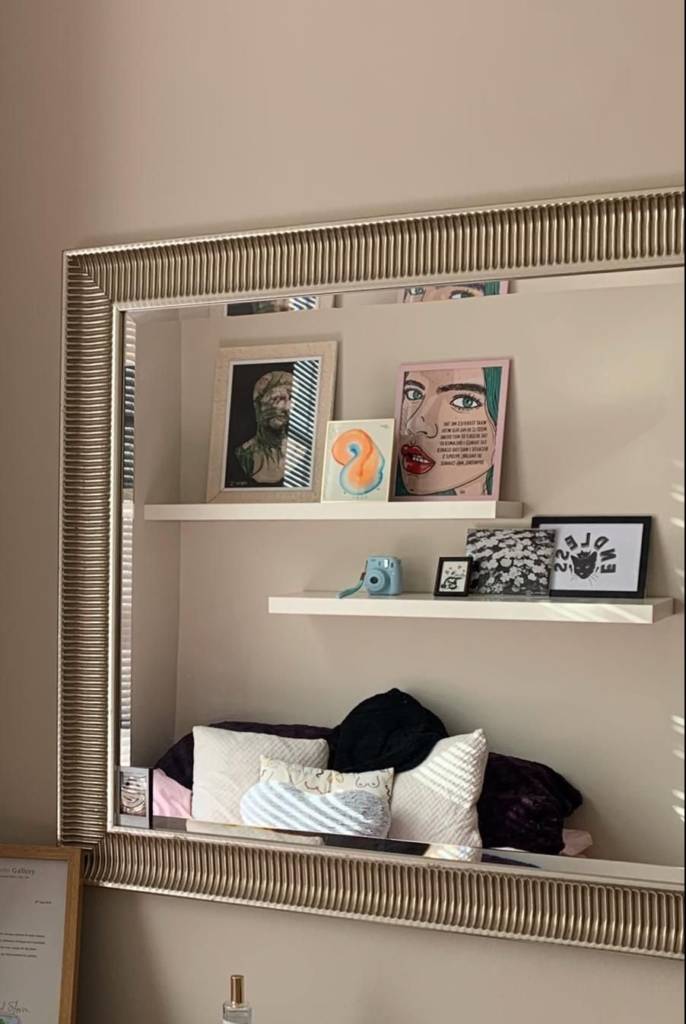Art and being a Millennial – How does social media empower my generation to start collecting art?
By our Ambassador, Alexandra Steinacker Clark (follow Alexandra here)
I was scrolling through my feed a few years ago, consuming content influencers created which showcased their fashion and lifestyles, when I stumbled across the world of art on Instagram. Delving in, it felt like the type of content that made its way into my every-day life underwent a complete transformation, giving me a close-up view of artists and their creativity, instead of new shoes and designer bags. In this artic
le, I will discuss three points that social media brings to the world of art collecting, namely the ability to share, the benefits of collaboration, and the relevance of accessibility, all in conjunction with the effects of navigating the online social spheres.
I wish to touch on the importance of sharing – and with this I mean being loud and proud about your projects and work. This is something that is beneficial for your network, as it inspires others to take action in creative movements within the arts. It is also something that is beneficial to you personally, because if you are a practicing artist, sharing your works can lead to international sales. I have personally been in touch with wonderful artists like Sarah Lörenk, who does great Street Art and painting in Brazil, or painter Ecaterina Vorona from Moldova, from whom I bought three acrylic on paper works through my contact with her on Instagram. If you are an artist or an art professional, sharing your achievements while allowing yourself to be openly proud about what you are doing is an in
credible tool of communication. It is also a means of combating so-called imposter syndrome, something very common amongst millennials and other generations alike. Through social media, you have the ability to communicate to your peers, to learn from your mentors, and be inspired by those you come into contact with, who can be from all over the globe from various countries, cultures and backgrounds.
Which brings me to my next point, which is that of accessibility. The term accessibility has a variety of meanings, the most common being the removal
of barriers for people with disabilities. In this case, though, I am referring to the accessibility of opportunities. As an art collector, I have the opportunity to get in touch with professionals and organizations like MTArt Agency, through which I have been able to acquire one of my favorite pieces by American artist Amber Vittoria to add to my collection. Seeing the work that MTArt Agency has done through the digital social interactions I have had with them, at the time of purchasing my piece, I already had full confidence in their representation, pricing and partnership. Along with that, I had a comprehensive personal experience with the artist though their social media, getting to know their ethos directly from them and their online representation. As an extension of this experience, I have had the opportunity to become an Ambassador for MTArt and completely support their efforts in pricing some of their available pieces within a more affordable range. In a section for people with a smaller budget, works begin at £25 and go up to around £1,500 for pieces by MTArt’s rising stars.
Through the interactions in the online digital space, connections can be made which can lead to the opportunity of collaboration. This is of great benefit for artists and art professionals alike, but one amazing example of the use of social media is when artists have the chance to collaborate with brands. A recent example of this is the collaboration between French-Japanese artist Tiffany Bouelle and the collection capsule with Maison Percée. They launched their collective campaign together through crowdfunding and created special edition objects that merge fashion, design and art. Another example is the collaboration between British Artist Claire Luxton and luxury beauty brand L’Occitane currently going on in which Claire’s works are exhibited in the window displays of their flagship store in London. These are pieces that have been made available to the general public, accessible through simply walking by the store. In addition, the works incorporate a 3D virtual reality when viewed through an app on a smartphone, making the pieces even more interactive and special. Not only is there inspiration and encouragement through social media to collect art that hangs on walls or stands on plinths, but also to collect art that can be worn to an important meeting, or seen while grabbing a coffee and going on a walk in town with friends. Social media encourages collaboration, but it also provides a platform for the collaboration to be appreciated on an every-day level. This opens up collecting in a way that begins to break down the walls often guarding the exclusivity of the art world, and making the artists and their works more accessible to the general public.
Although I only touched upon three points on being a millennial in the arts, I can say that social media not only changes the landscape of collecting, but also the entire landscape of social and professional interaction in the arts in general. The global perspectives these social media apps lend us are something I feel we take for granted, so let us try to define what we choose to have in our “visual diets”, to quote an initiative by CEO Marine Tanguy, and follow empowering people who can inspire us on a daily basis.



